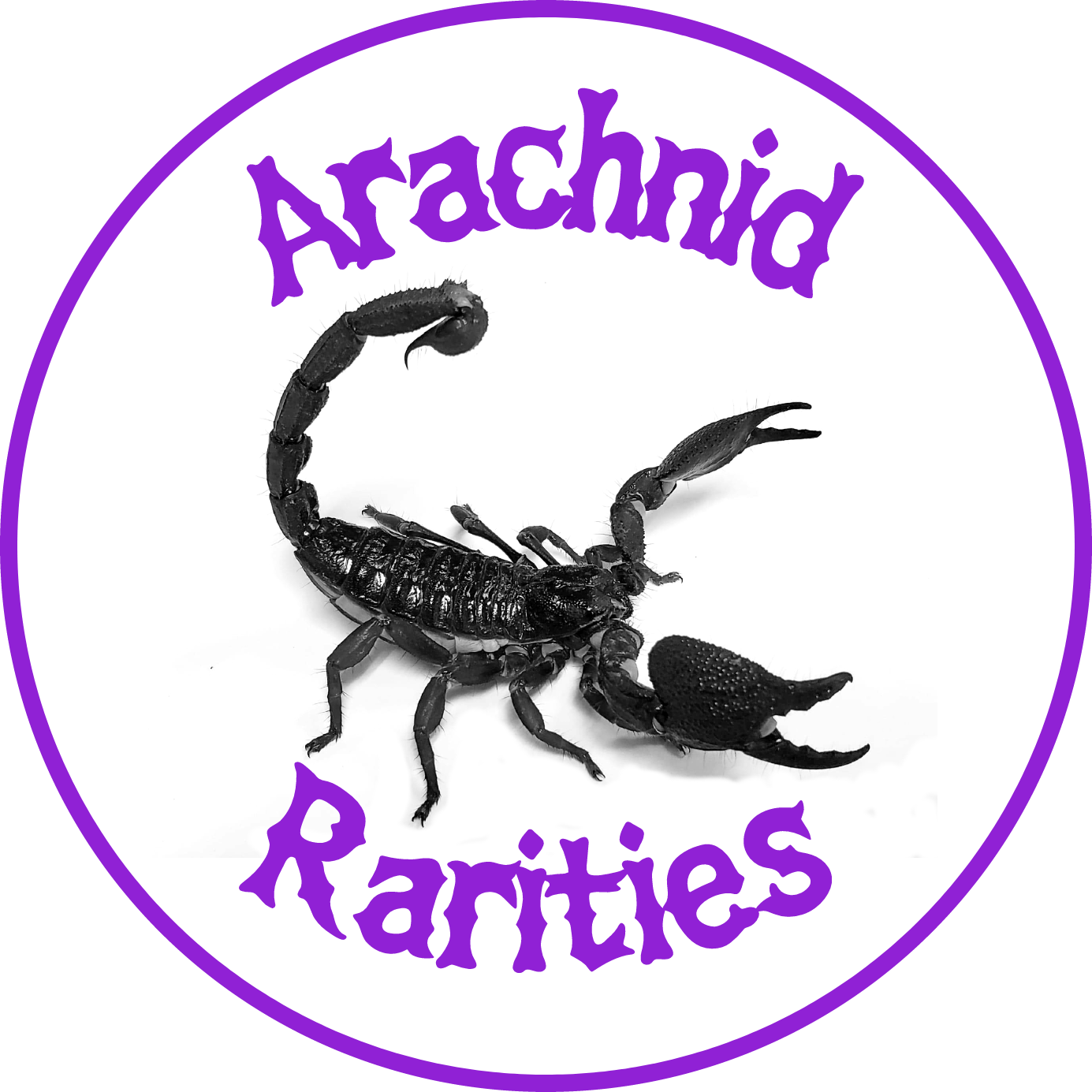Grandanameno sp Black (South African Velvet Spider)
This species is most likely Grandanameno echinata (South African Velvet Spider)
These will not last long! The demand on these have been through the roof! These are well started, 3-4 molts.
Geographical Distribution: South Africa
Care: Keep on the drier side. One to two inches of coco fiber with sphagnum moss on top. A couple drops of water along the side once a week will suffice for water requirements. Fruit flies are a good food source for the first few molts, after, 1/8”-1/4” crickets work well. They are good feeders and will often come out of their web burrow to actively hunt food. Temperatures in the mid 70s F work well (~24C).
Photos coming soon.
This species is most likely Grandanameno echinata (South African Velvet Spider)
These will not last long! The demand on these have been through the roof! These are well started, 3-4 molts.
Geographical Distribution: South Africa
Care: Keep on the drier side. One to two inches of coco fiber with sphagnum moss on top. A couple drops of water along the side once a week will suffice for water requirements. Fruit flies are a good food source for the first few molts, after, 1/8”-1/4” crickets work well. They are good feeders and will often come out of their web burrow to actively hunt food. Temperatures in the mid 70s F work well (~24C).
Photos coming soon.
This species is most likely Grandanameno echinata (South African Velvet Spider)
These will not last long! The demand on these have been through the roof! These are well started, 3-4 molts.
Geographical Distribution: South Africa
Care: Keep on the drier side. One to two inches of coco fiber with sphagnum moss on top. A couple drops of water along the side once a week will suffice for water requirements. Fruit flies are a good food source for the first few molts, after, 1/8”-1/4” crickets work well. They are good feeders and will often come out of their web burrow to actively hunt food. Temperatures in the mid 70s F work well (~24C).
Photos coming soon.

